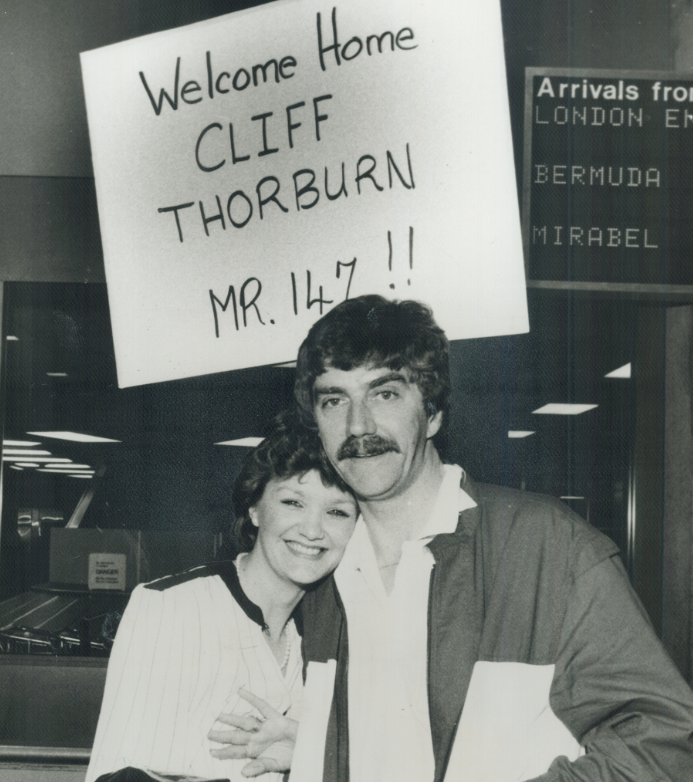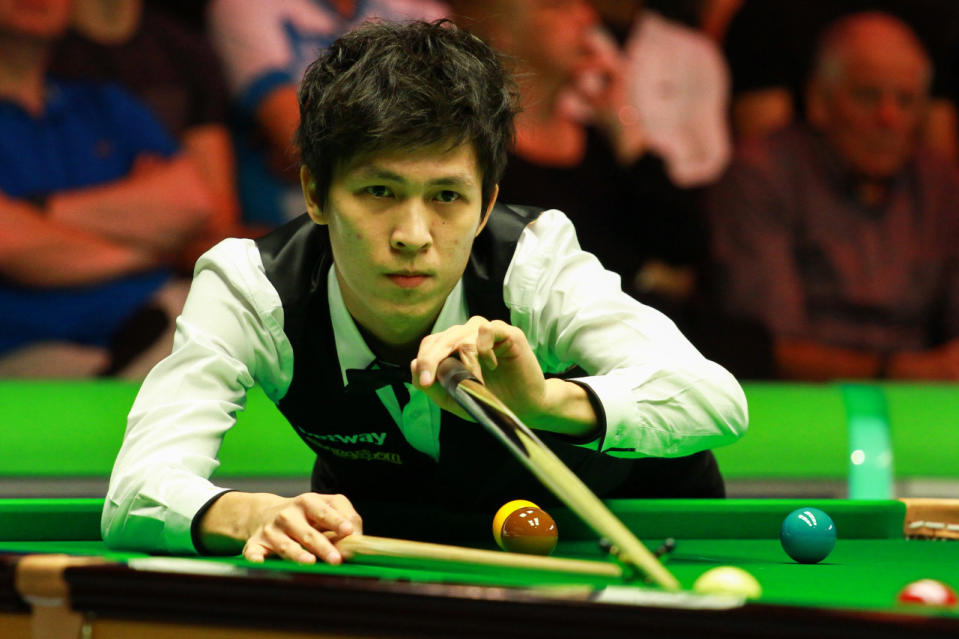Snooker: Maximum breaks still have a lustre but the rarity factor has all but disappeared
Yahoo Sport's snooker expert Nick Metcalfe looks back at the history of the 147 - and the agonising near misses

‘Good luck, mate’.
An unlikely candidate for most memorable ever line of snooker commentary, but then this has always been a pretty eccentric sport.
When Cliff Thorburn approached the final black that would seal a first Crucible 147 in the spring of 1983, Jack Karnehm spoke for every viewer tuning in when he whispered those three famous words.
Canadian Thorburn duly sunk that black, falling to his knees in sheer delight. His opponent Terry Griffiths and fellow countryman Bill Werbeniuk - who was playing on the other side of the dividing wall but had stopped to watch the drama - gave Thorburn an almighty bear hug.
It was an unforgettable Crucible moment. And such was the iconic status of a maximum break back then, more people probably remember Thorburn’s 147 than the eventual final that year, which ‘The Grinder’ lost to Steve Davis.

As I mentioned in my piece on the state of snooker last week, the standard of play now is simply so much higher than it was in the much lauded glory days of the 1980s. And that is clearly borne out by statistics for 147 breaks, which is completed when a player pots 15 reds, 15 blacks, and the six colours in order.
There were only eight made in the 1980s, the first on television coming from the great Davis a year before Thorburn’s effort, at the 1982 Lada Classic in Oldham. As an interesting aside, it should probably have been the second on the small screen, but when John Spencer compiled a maximum at the 1979 Holsten Lager International (great tournament name there) the Thames Television crew were on their lunch break.
A further 26 maximum breaks in professional tournament play came in the 1990s, including three more at the Crucible – one for crowd favourite Jimmy White in 1992, another for Stephen Hendry in a 1995 semi-final, and then the most incredible 147 of them all in 1997, made in just five minutes, 20 seconds, by Ronnie O’Sullivan.
Compare the 34 made in those two decades with the 84 so far compiled this century. They have now become so commonplace in comparison that they don’t attract anything like the same attention.
Indeed, it became quickly apparent at this year’s Welsh Open that O'Sullivan potting 14 blacks and a pink for a 146 garnered far more headlines than had he put away 15 blacks. O'Sullivan, as you may recall, refused the maximum on the grounds that the £10,000 rolling bonus prize wasn’t enough to make it worth his while.

It is true that there was for some years a huge bonus of £147,000 on offer for a maximum break made during the World Championship. Eventually this was scrapped, not least because it was becoming so difficult to insure against.
There have been six maximums made at snooker’s most famous arena this century, making it 10 in total, the last of them coming from Hendry in 2012. That old showman O'Sullivan has made the most maximums of any player, with 13. Remarkably, one of those actually sealed victory in the final of a ranking event, against Ding Junhui at the 2014 Welsh Open.
The 118th 147 break in professional tournament play was made by Irishman Fergal O'Brien earlier this year at an event without any fans present, the Championship League in Essex.
There have been some agonising near misses over the years, perhaps the most memorable coming when Ken Doherty inexplicably rattled the jaws with the final black during the 2000 Masters final against Matthew Stevens at Wembley.
In this current season, Thailand’s Thepchaiya Un-Nooh has achieved an unwanted double in snooker history, twice missing a black when in line for a maximum, first at the UK Championship in York and then at the recent World Championship qualifiers in Sheffield.
One thing I have noticed, which in a way is a bit of a shame, is how early commentators now mention the prospect of a 147. In days gone by, at least five or six reds would need to be down before a maximum was flagged up, now it could be as few as two or three. Another clear sign of how much more regular they are nowadays.

You have to think that the 147 will only become even more commonplace in the years to come, in much the same way that once rare nine dart finishes are now so common.
Despite that, there will always be a certain lustre to the maximum. Just look at the delighted fist pumping of players and fans alike when a 147 is made.
Keep your eye on the screen over the next couple of weeks. The 119th maximum break could well be close at hand.

 Yahoo Sport
Yahoo Sport 





































